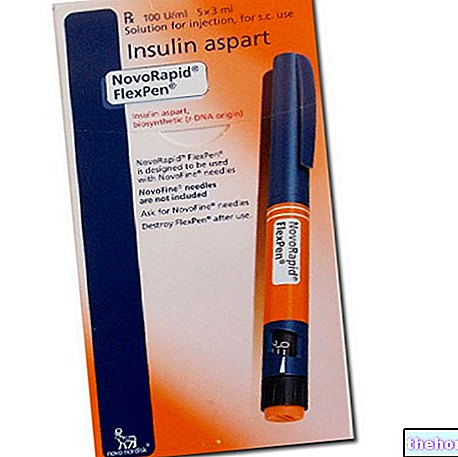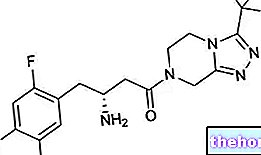
What is Trulicity and what is it used for?
Trulicity is an antidiabetic medicine used in adult patients with type 2 diabetes mellitus to control the level of glucose (sugar) in the blood. Trulicity can be used as sole therapy when diet and exercise alone do not provide adequate control of blood glucose levels in patients who cannot take metformin (another antidiabetic medicine). Trulicity can also be used as add-on therapy in combination with other antidiabetic medicines, including insulin, when these medicines, together with diet and exercise, do not provide adequate control of blood glucose. Trulicity contains the active substance dulaglutide.
How is Trulicity used - dulaglutide?
Trulicity is available in pre-filled pens (0.75 mg and 1.5 mg) containing a solution for subcutaneous injection. The medicine can only be obtained with a prescription. Patients self-administer the medicine (after being properly trained) subcutaneously in the abdomen or thigh. The recommended dose is 0.75 mg once weekly if the medicine is used alone and 1.5 mg once a week. once a week if used as combination therapy (although your doctor may start with the lower dose in patients potentially at higher risk, such as those over the age of 75). of an antidiabetic medicine called sulphonylurea or with insulin, the dose of the sulphonylurea or insulin may need to be reduced to avoid hypoglycaemia (low blood glucose). For more information, see the package leaflet.
How does Trulicity - dulaglutide work?
Type 2 diabetes is a disease in which the pancreas does not make enough insulin to control the level of glucose in the blood or where the body is unable to use insulin effectively. The active substance in Trulicity, dulaglutide, is a 'GLP-1 receptor agonist'. It works by attaching to receptors for a substance called glucagon-like peptide 1 (GLP-1) found on the surface of cells in the pancreas, causing them to release insulin. After Trulicity is injected, dulaglutide reaches the receptors in the pancreas, activating them. This causes the release of insulin and helps reduce blood glucose levels and control type 2 diabetes.
What benefit has Trulicity - dulaglutide shown during the studies?
The benefits of Trulicity were investigated in 5 main studies involving over 4,500 patients with type 2 diabetes mellitus. In these studies, Trulicity was compared with placebo (a dummy treatment) or other antidiabetic medicines used alone. or as an add-on medicine in various combination therapies. Information from a sixth study, which was presented during the procedure, was also considered. The main measure of effectiveness was the change in the level of glycosylated hemoglobin (HbA1c). , the percentage of hemoglobin in the blood that binds to glucose. "HbA1c gives an" indication of the efficacy of blood glucose control. Patients' mean HbA1c at baseline was 7.6% to 8.5% and patients were treated for at least 52 weeks. Trulicity was more effective than metformin in lowering HbA1c levels when used alone; it was also more effective than the antidiabetic medicines exenatide (given twice daily) or sitagliptin, and at least comparable to insulin glargine when used as therapy. Add-on to other treatments. After 26 weeks of treatment, Trulicity reduced HbA1c by 0.71-1.59% at the lowest dose and by 0.78-1.64% at the highest dose. This is considered to be clinically significant. The benefits have been shown to be maintained over the course of long-term treatment.Approximately 51% of patients treated with the lowest dose and 60% of patients treated with the highest dose of Trulicity achieved a target HbA1c value of less than 7.0%, an overall better result than those achieved with treatments alternative.
What is the risk associated with Trulicity - dulaglutide?
The most common side effects with Trulicity (which may affect more than 1 in 10 people) are nausea, vomiting and diarrhea. For the full list of side effects and limitations reported with Trulicity, see the package leaflet.
Why has Trulicity - dulaglutide been approved?
The Agency's Committee for Medicinal Products for Human Use (CHMP) decided that Trulicity's benefits are greater than its risks and recommended that it be approved for use in the EU. The Committee noted that the medicine, when used in in combination with other drugs, it produces a significant and clinically relevant effect in the control of blood glucose. The drug was more effective when administered at a weekly dose of 1.5 mg rather than 0.75 mg. However, when used alone in patients who cannot take metformin, or when given to very elderly subjects (over 75 years of age), the benefit / risk ratio was better with the lower dose. Regarding safety, the effects of prolonged use and safety in the groups vulnerable populations such as very elderly patients should be monitored, but no particular alarming aspects have emerged and the risks are considered similar to those of other meds. medicines belonging to this class. Furthermore, Trulicity has the advantage of being administered once a week.
What measures are being taken to ensure the safe and effective use of Trulicity - dulaglutide?
A risk management plan has been developed to ensure that Trulicity is used as safely as possible. Based on this plan, safety information has been added to the summary of product characteristics and package leaflet for Trulicity, including the appropriate precautions to be followed by healthcare professionals and patients. Further information can be found in the summary of the risk management plan.
Other information about Trulicity - dulaglutide
On 21 November 2014, the European Commission granted a "Marketing Authorization" for Trulicity, valid throughout the European Union. For more information on Trulicity therapy, read the package leaflet (included with the EPAR) or consult your doctor or the pharmacist. Last update of this summary: 11-2014.
The information on Trulicity - dulaglutide published on this page may be out of date or incomplete. For a correct use of this information, see the Disclaimer and useful information page.




























